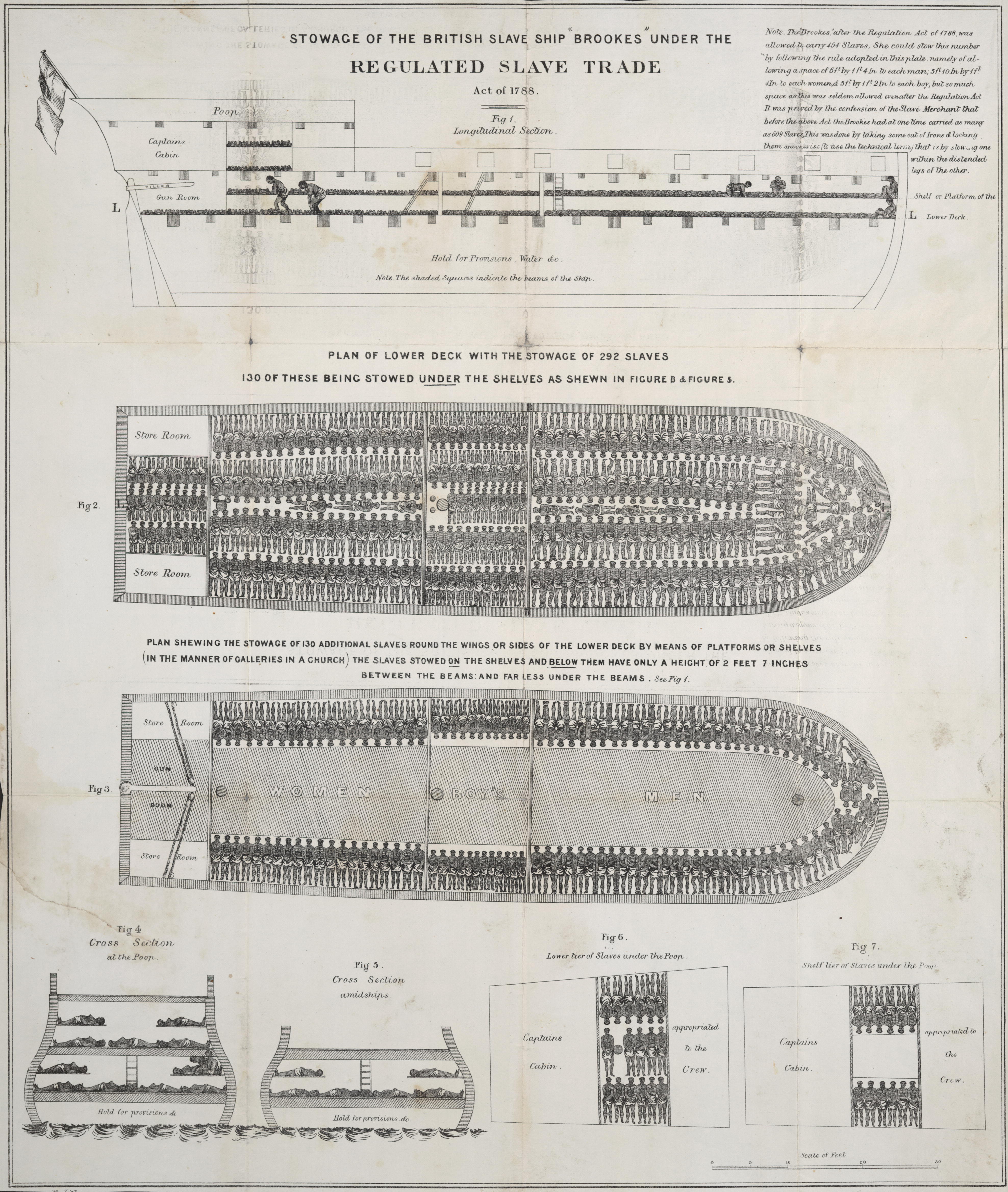|
Tom (ship)
Several vessels have been named ''Tom'': * was launched in 1771 in Britain. Between 1778 and 1792 she was a West Indiaman, trading between Lancaster and Jamaica, St Lucia, and Grenada. New owners in 1792 sailed ''Tom'' as a slave ship in the triangular trade in enslaved people. She was condemned in 1794 at Barbados after having delivered the captives she had acquired in the Cameroons. * (or ''Toms'') was launched in 1780 in America, possibly under another name. She first appeared in British records in 1792. From 1792 ''Tom'' participated as a slave ship in the triangular trade in enslaved people. She made two complete voyages from Liverpool. French frigates captured her in 1794 before she could acquire any slaves. * was launched at Whitby in 1798 as a West Indiaman. New owners in 1802 resulted in ''Tom'' becoming a whaler A whaler or whaling ship is a specialized vessel, designed or adapted for whaling: the catching or processing of whales. Terminology The term ''whaler'' is ... [...More Info...] [...Related Items...] OR: [Wikipedia] [Google] [Baidu] |
West Indiaman
West Indiaman was a general name for any merchantman sailing ship making runs from the Old World to the West Indies and the east coast of the Americas. These ships were generally strong ocean-going ships capable of handling storms in the Atlantic Ocean. The term was used to refer to vessels belonging to the Danish (e.g. ), Dutch, English, and French (e.g. ) West India companies. Similarly, at the time (18th and 19th centuries) people also referred to East Indiamen (ships trading with the East Indies), Guineamen (slave ships), or Greenlandmen ( whalers in the North Seas whale fishery). British West Indiamen tended to be London-built and to sail directly from England (generally London) to the West Indies. Guineamen tended to be built (or owned) in Bristol and Liverpool and to sail from Bristol or Liverpool via West Africa in what is now often referred to as the triangular trade in enslaved people. There were London-based Guineamen, (for example ), and Liverpool-based West Indi ... [...More Info...] [...Related Items...] OR: [Wikipedia] [Google] [Baidu] |
Slave Ship
Slave ships were large cargo ships specially built or converted from the 17th to the 19th century for transporting Slavery, slaves. Such ships were also known as "Guineamen" because the trade involved human trafficking to and from the Guinea (region), Guinea coast in West Africa. Atlantic slave trade In the early 17th century, more than a century after the arrival of European emigration, Europeans to the Americas, demand for unpaid labor to work plantations made slave-trading a profitable business. The Atlantic slave trade peaked in the last two decades of the 18th century, during and following the Kongo Civil War. To ensure Profit (accounting), profitability, the owners of the ships divided their Hull (watercraft), hulls into holds with little headroom, so they could transport as many slaves as possible. Unhygienic conditions, dehydration, dysentery, and scurvy led to a high mortality rate, on average 15% and up to a third of captives. Often, the ships carried hundreds of sla ... [...More Info...] [...Related Items...] OR: [Wikipedia] [Google] [Baidu] |
Triangular Trade
Triangular trade or triangle trade is trade between three ports or regions. Triangular trade usually evolves when a region has export commodities that are not required in the region from which its major imports come. It has been used to offset trade imbalances between different regions. The most commonly cited example of a triangular trade is the Atlantic slave trade, but other examples existed. These include the seventeenth-century carriage of manufactured goods from England to New England and Newfoundland, then dried cod from Newfoundland and New England to the Mediterranean and Iberian peninsula, followed by cargoes of gold, silver, olive oil, tobacco, dried fruit, and "sacks" of wine back to England. Maritime carriers referred to this Atlantic trade as the "sack trade." Another example was general cargo from Britain to Australia, Australian coal to China, then tea and silk back to Britain. The Atlantic slave trade used a system of three-way transatlantic exchanges – known ... [...More Info...] [...Related Items...] OR: [Wikipedia] [Google] [Baidu] |
Whaler
A whaler or whaling ship is a specialized vessel, designed or adapted for whaling: the catching or processing of whales. Terminology The term ''whaler'' is mostly historic. A handful of nations continue with industrial whaling, and one, Japan, still dedicates a single factory ship for the industry. The vessels used by aboriginal whaling communities are much smaller and are used for various purposes over the course of the year. The ''whale catcher'' was developed during the Steam-powered vesselage , and then driven by diesel engines throughout much of the twentieth century. It was designed with a harpoon gun mounted at its bow and was fast enough to chase and catch rorquals such as the fin whale. At first, whale catchers either brought the whales they killed to a whaling station, a settlement ashore where the carcasses could be processed, or to its factory ship anchored in a sheltered bay or inlet. With the later development of the slipway at the ship's stern, whale cat ... [...More Info...] [...Related Items...] OR: [Wikipedia] [Google] [Baidu] |

